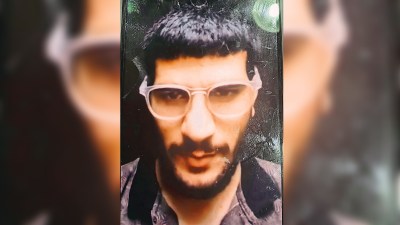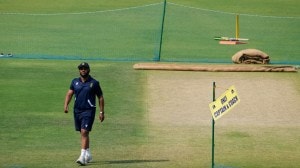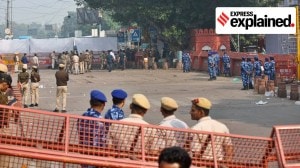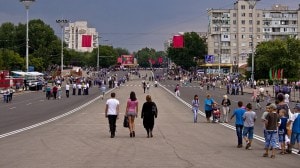North° by Northwest
AS he tops off another six-hour shift, looking at a radar screen blinking with more than 20 flights containing at least 4,000 people, air tr...

AS he tops off another six-hour shift, looking at a radar screen blinking with more than 20 flights containing at least 4,000 people, air traffic controller (ATC) Ajay Joshi asks a rhetorical question, ‘‘Isn’t it beautiful?’’
At the centre of the screen is a tiny speck that indicates Mumbai city; the space around denotes the city’s airspace and every mechanical object in the sky—private, commercial, or air force. Cracking across the screen from the edges towards the centre are lines denoting the flight path of every plane in the Mumbai flight information region—SVA 871 going to Riyadh, SAH 6243 going to Chennai, JA 404 coming from Pune and so on.
That’s rush hour at the Chhatrapati Shivaji International Airport, India’s busiest. As the evening sun does its best to stretch out the day, tiny metal birds descend and ascend without disruptions.
At the far end of the airport, before the cargo terminal and down the road from the tiny Khushi wine shop is the candy-striped Air Traffic Services (ATS) building. On the third floor, where Joshi works, the room is divided into two sections: The Approach Radar System, which mans all traffic up to 14,000 ft; the Area Control Centre, in charge of flights between 14,000 and 46,000 ft.
‘‘It’s like playing a video game, only here each character represents people, and there’s no room for mistakes,’’ says Joshi.
| During the evening rush hour, there are only 18 people manning the screens, even though there’s enough hardware for the work to be divided between 26. |
He sounds easy, but six days a week, Joshi, 39, performs one of the most stressful jobs in the world. It’s the other side of the open skies policy. As the number of flights and folks taking to the air increase by the day, and the airport readies for a facelift, the pressure is mounting on the folks at the ATS.
Just look at the numbers: Last year, there were less than 450 flights per day, now there are 520 plus any number that simply overfly Mumbai.
Lal has an interesting analogy to describe the long term effects of such an imbalance: ‘‘Once a person has eaten enough and is full, even the smallest biscuit is too much and can cause a problem.’’
According to the International Labour Organisation, the stress of a controller’s job comes from the operative aspects and organisational structure of their work, i.e. what they do and their work environment. Passengers on a flight are usually too taken up by close-up shots of the clouds to think of ATCs. Few realise that there are folks on the ground who are as crucial as the captain.
ATCs are the eyes and ears of a pilot. More than just getting flights on and off a runway, an ATC is the pilot’s only connection to the world below. They issue the coordinates, tell them where their neighbours are, which way to turn and whether there are any shortcuts. ‘‘We develop a kind of understanding with them. And when something goes wrong, that’s when you appreciate each other,’’ says Lal.
‘‘We cleared everything and had doctors on the tarmac,’’ says Lal. And on the day we met them, they’d just worked out a situation with a stray dog on the runway. ‘‘It happens so many times that we’ve got catchers around the runway,’’ says Rajeev Mehta, another deputy GM.
Three floors above the Area Control Centre, housed inside a saucer-shaped structure is the Aerodrome Control Tower, which mans the landing and departure of all flights in the vicinity of the airport. The other thing cruising around this building is the politics. ‘‘Everyone’s always convinced we’re on someone else’s side,’’ says Mehta. ‘‘If we get an Air India flight down faster than Jet, then the Jet guys say it’s because AI is a government airline.’’
|
THE PARKS ON THE GROUND
|
|
|
The salary scale for assistant general managers, most of whom have more than a decade of experience, is between Rs 16,000 and |
Back in the day before hi-jinks radar hardware, Joshi, who’s been with the ATS for 18 years, worked on strips. Every flight in the sky had a strip corresponding to it on a board. Back then, charting the course of a flight involved a high degree of intuition. ‘‘Mistakes may happen no matter what you’re working on. But errors were more likely in the past,” says Joshi. “Now you could wake me up at three in the morning, and I could instantly do this.’’
Through the years, the Nagpur-born BSc physics and math graduate has worked his way to achieving most of his goals: He’s made it to assistant general manager, got married and has two children. But, says Joshi, ‘‘Every day we utter the names of all these exotic places, but we never get to go there.’’
Joshi became an ATC from a high of reading Arthur Hailey’s Airport. “The day after I finished the book, a friend showed me this ad for the ATS,” he remembers. In fact, his father was so excited by the prospect that he booked him an air ticket to Mumbai.
ATCs work six-hour shifts, which add up to 42 hours a week or more; the international standard is 36 hours or a maximum of 40. Each shift is manned by about 20 people looking after upto 34 flights during peak hours, despite the fact that the declared capacity for even peak hour traffic is only 24 flights.
Major international airports in cities like Sydney or New York are usually manned by twice the number of controllers.
In 1999, four ATCs led an 18-day strike demanding increased pay and better work conditions, which put a full stop to all air activity. Last week, the four were ordered to stand trial under Suppression of Unlawful Acts against the Safety of Civil Aviation; if convicted, they face a maximum sentence of life imprisonment.
But for all the number crunching, delays and stress, the safety record of the Mumbai airport is surprisingly good. And, during an average workday, in addition to chasing dogs, ATCs also do their bit for airlines’ bean counters by reducing the flying time of a plane. ‘‘It’s a thrill when you can cut down someone’s flying time,’’ says S Mangala, an assistant general manager.
If Mangala had a penny for every time that she’s beaten an ETA, she’d be a rich woman. Despite being outnumbered by the other gender, the 36-year-old loves the edge—and the control. “It’s hard to explain, but you’re in a position of power, where you make decisions and they have to be followed, no questions asked.”
Mangala’s been at the screens for about 13 years now; she even goes home to it—her husband’s an ATC as well. These days, the mother of two is busy packing for a move to the Dibrugarh airport, in Assam. It’s a two-year transfer to what’s called a ‘hard station’ and is mandatory for all senior personnel. Though the move came through some time ago, till the management can find a replacement for her present post, Mangala and family will just have to wait with their suitcases. ‘‘They call it a hard station because it’s a small place and there’s not much traffic there, but I’m looking forward to it because I’ll get more time to spend with my children and relax,’’ she says. It will also mean more time for her other passion—sewing.
The evening shift is getting ready to change hands; Joshi’s watch is almost over. But there’s JA 468, CA 751, JA 452 and MA 194 still waiting up in the sky for runway clearance. It’s going to be another hard day’s night.





- 01
- 02
- 03
- 04
- 05


























